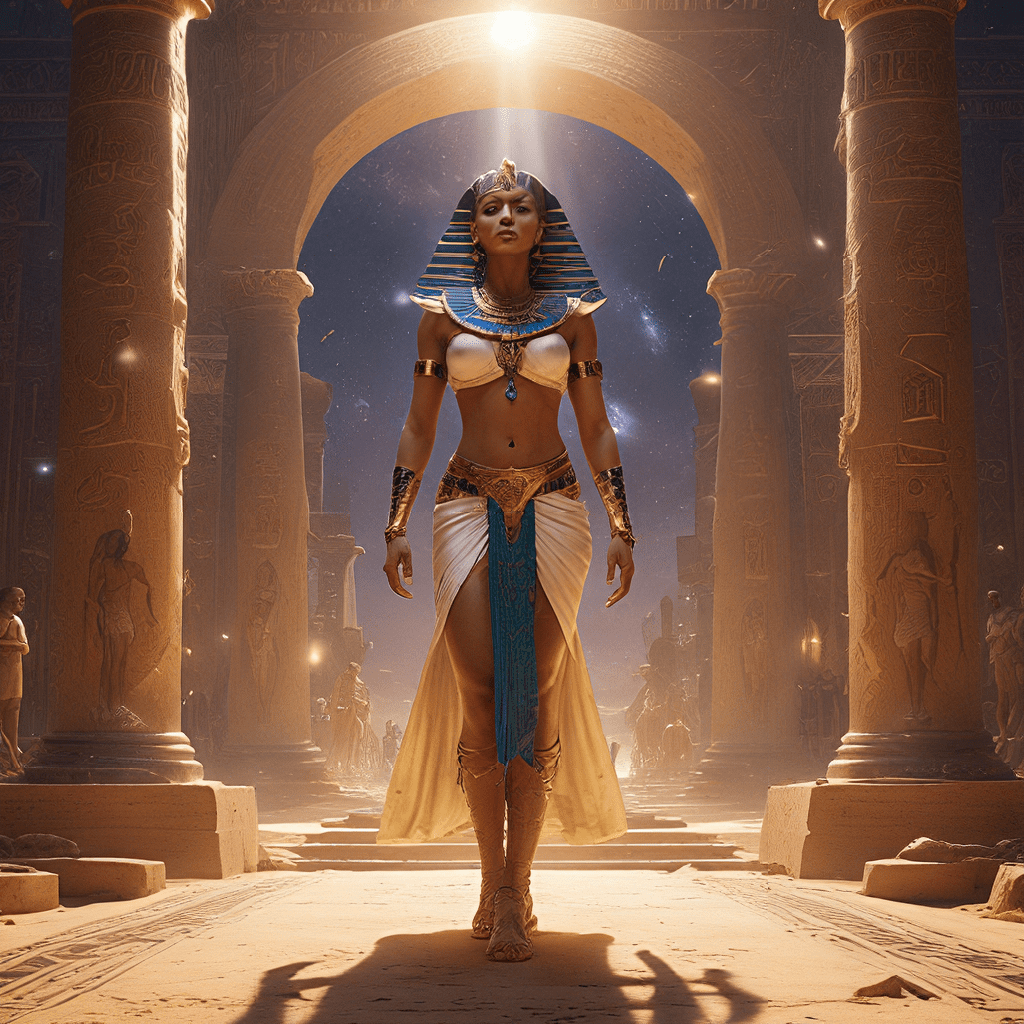1. Introduction: The Ever-Present Cycle of Creation and Destruction
In ancient Egypt, the cosmos was a place of constant change and renewal, governed by a grand and intricate dance of creation and destruction. The Egyptians believed that the universe was not simply a static entity but rather a dynamic system constantly being reborn. This understanding of the cosmos deeply influenced their worldview, their religious beliefs, and their daily lives. To truly understand the heart of Egyptian civilization, it’s crucial to delve into their fascinating concept of cyclical cosmology.
2. The Primeval Waters: Nun and the Emergence of Order
Before the existence of the world, there was only Nun, a vast, formless ocean of primordial waters. It represented chaos, the absence of any structure or order. The Egyptians believed that within this chaotic realm, the god Atum emerged, self-created from the waters of Nun. Atum was the first being, the ultimate source of all creation. The act of Atum’s emergence from Nun signified the beginning of order, the first step in the creation of the cosmos. This moment marked the transition from chaos to structure, from the formless to the formed. The idea of Nun and Atum’s emergence is deeply linked to the cyclical nature of Egyptian cosmology. For every new creation, there was a previous destruction, a return to the primordial waters of Nun, only to be followed by a new beginning.
3. The Cosmic Egg: The Birth of the Universe
Another fascinating myth in Egyptian cosmology involves the concept of the cosmic egg. This egg is often described as containing the seeds of the universe, a symbol of potential and the possibility of creation. Some versions of the myth associate this egg with Atum himself. They explain that Atum, within the boundless waters of Nun, created the egg by his own will, much like a bird’s egg contains the potential for a new life. The egg then split open, and from it, the universe emerged with all its wonders. This symbolism reveals the power of Atum, a god of creation and procreation who brought forth the world from a state of absolute nothingness. The image of the egg emphasizes the idea of the universe as a self-contained entity, a complete and independent world that emerged from a single point of origin.
4. The Ennead: The Divine Family of Creation
The Ennead, a group of nine major deities, played crucial roles in shaping the world. These gods and goddesses were responsible for various aspects of creation and represented different facets of the cosmos. The most important members of the Ennead included Atum, Shu, Tefnut, Geb, Nut, Osiris, Isis, Seth, and Nephthys. They were believed to be descendants of Atum, forming a divine family that worked together to bring order to the universe. Shu and Tefnut, children of Atum, represented air and moisture, respectively, and were crucial in separating the sky from the earth. Geb and Nut, their children, symbolized the earth and the sky. Osiris, Isis, Seth, and Nephthys, the next generation, became associated with various aspects of life, death, and rebirth. The Ennead is a testament to the complexity and interconnectedness of Egyptian cosmology. It shows how the creation of the world was a collaborative effort, a complex dance of divine forces working in harmony to shape the universe.
5. The Role of Ma’at: Cosmic Harmony and Order
Ma’at, a concept central to Egyptian thought, represented divine order, balance, and harmony. It was believed to govern the universe, ensuring its stability and preventing chaos from returning. Ma’at was not merely an abstract concept; it was a tangible force, a cosmic principle that permeated every aspect of existence. In human society, Ma’at was closely associated with justice, righteousness, and truth. The pharaoh, considered the embodiment of Ma’at on earth, had the responsibility to uphold justice and ensure the balance of the cosmos. The Egyptians believed that upholding Ma’at was crucial for prosperity and well-being, both in the physical and spiritual realms. They saw the universe as a delicate balance, and any disturbance to this order could lead to chaos and suffering.
6. The Sun God Ra: The Divine Spark of Life
Ra, the sun god, was a vital figure in Egyptian cosmology. He was often seen as the creator of the sun, the source of light and life. His daily journey across the sky represented the cycle of day and night, and his death and resurrection each night symbolized the constant cycle of rebirth and renewal. Ra’s journey is a significant representation of the cyclical nature of life and death. He brings light and warmth to the world, only to fade away, plunging the world into darkness. However, he always returns in the morning, signifying the eternal cycle of creation and destruction that governs the universe. The Egyptians viewed Ra as the embodiment of life, energy, and vitality. His presence brought light and warmth to the world, and his absence symbolized the darkness and the potential for new beginnings. This cyclical nature of Ra’s journey across the sky deeply influenced the Egyptian worldview, emphasizing the constant cycle of creation, destruction, and rebirth at the heart of their cosmology.





